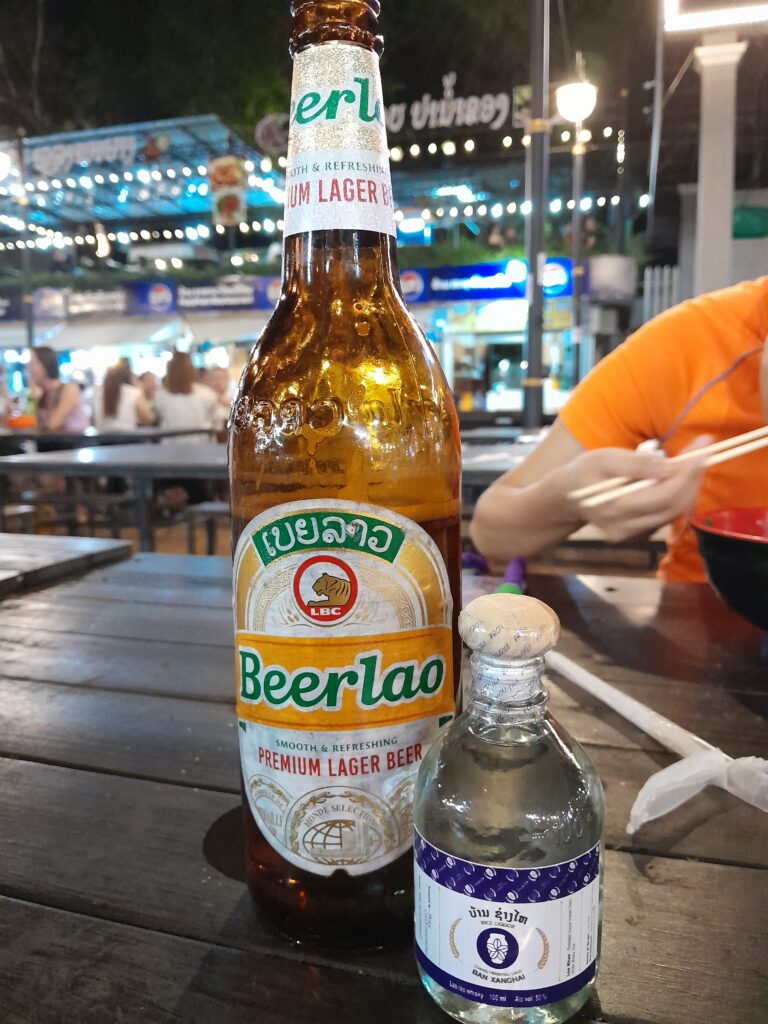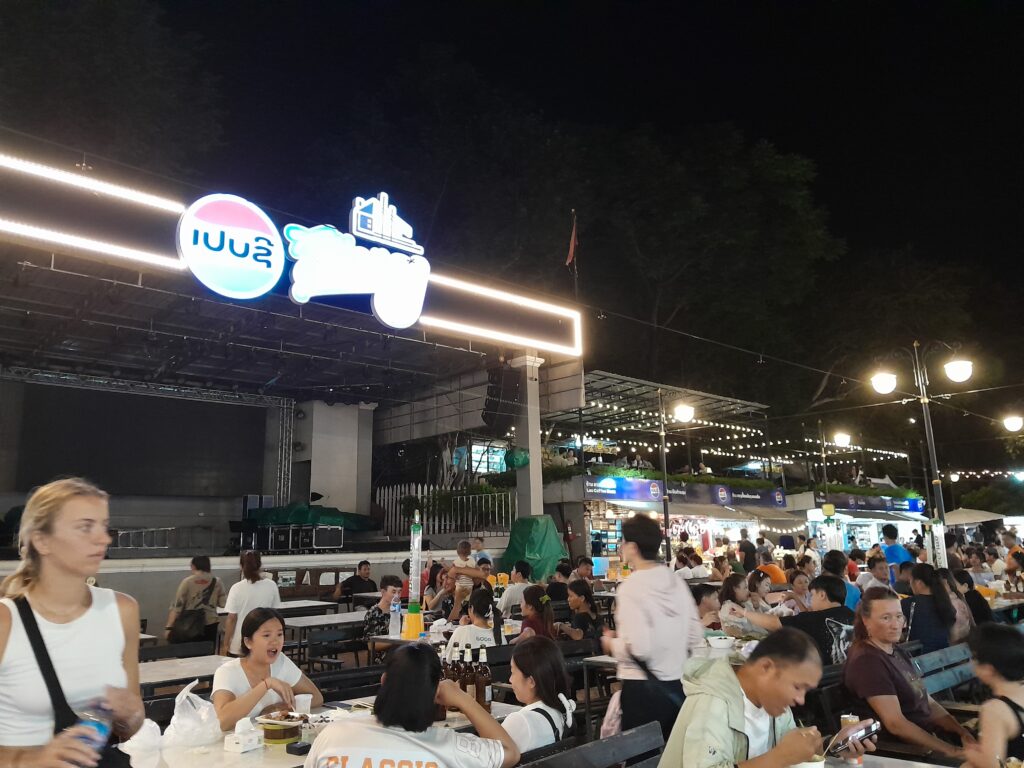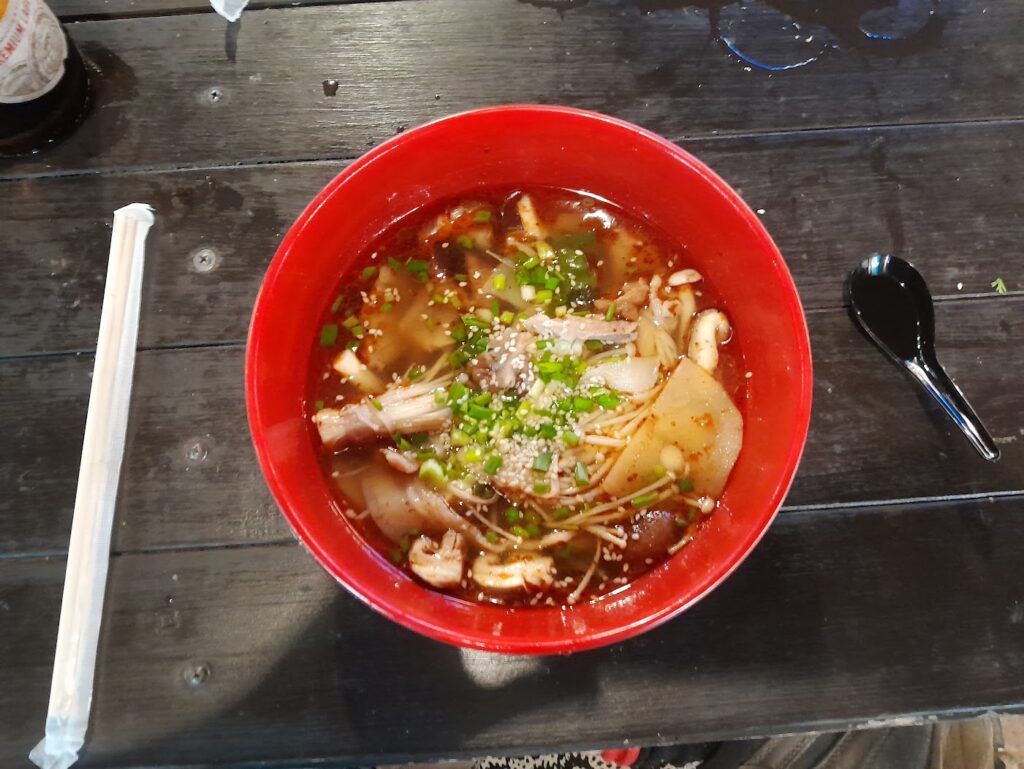After two long days travelling by slow boat on the steady current of the Mekong River, we were ready to plant our feet in Luang Prabang. Its promise of street markets and quiet charm would be a welcome change. This is the first stop for most tourists travelling through Laos from Thailand. Most people will stay for a day or two, but we would be here for a week.
Despite there being ports in the center of town, the slow boat didn’t drop us in Luang Prabang. It dropped us on a port outside town, next to a taxi station. It was an obvious trap, forcing us to negotiate a price with the waiting taxis.
During the ride I realised that I had no idea where our hotel was, and we still didn’t have a SIM card with data. Thankfully one of the people we met in the tuk tuk was more prepared than we were, and he let us use his data to find our hostel.
The tuk tuk dropped us in the center of town near a street market. Our hotel was on the other side of the market, so we would have to walk the rest of the way. Despite this, tuk tuk drivers would still hassle us to hire them, asking where our hotel was with extreme persistence.
After making our way through the tuk tuks and the market we found the Rimvang Guesthouse, the hotel we had booked. It had a very rustic feel, with a balcony overlooking a small beer garden. The only problem was the nearby tree housing a green ant nest, who would happily walk over the power lines and start exploring our balcony. This was a problem because their bites can be quite painful. Thankfully the hotel gave us some ant repellent that worked very well at keeping them away.

Google-Fu revealed a night market selling food on the opposite end of the street market near where we were dropped off. So we ventured back through the bustling street market, this time at a slow pace so we could take things in. On our way we bumped into several people we had met on the boat. They were having fun shopping, and were happy to show off the various trinkets they had purchased.
After saying our goodbyes, we lingered to browse the market’s offerings. Lots of local teas and coffee, scarves and handkerchiefs, wooden frogs that croaked if you ran a stick across their back, as well as jewellery and cutlery made from the remains of UXOs1.
I wondered if these trinkets really were made out of bomb remnants, or if it was just a story they told the tourists. There were a lot of them, and multiple stalls selling products that must have come from the same molds. They were factory produced, but even the idea of them being made from bomb remnants was a stark reminder of Laos’ war-torn past, lending weight to even these small souvenirs.
Of course, we found the thing I was most interested in: local alcohol. We ended up purchasing a couple of small bottles of the local whisky to try. My wife wanted to try it with a mixer, but I was happy enough to drink mine neat. She was always a light drinker, if she took one sip of the whisky she would already be drunk.

After this we continued to the other end of the street market and past the ever-insistent tuk tuk drivers to get to the night market. It was a huge space that buzzed with the clinking of beer bottles, the murmur of conversations in a dozen languages, and the scent of grilling meats and spicy broths mingling in the air. A few people working in the area were running around attempting to keep up with the trash collection.
The night market was encircled by stalls showcasing a blend of Lao traditions and global cuisines. There were many Chinese food stalls selling shaokao, malatang, and noodle soup among other things. Nearby were Korean food stalls, selling ramen noodles or spicy chicken. Some Western stalls offered burgers, tacos, or hotdogs. Along the far side was more local Laos food. Most were selling Beerlao as well as food, something I was happy to take advantage of. On that side there was also a large stage, but there was no performance that night.
After weighing our choices, we settled on some malatang, its unique spicy soup reminding us of our home in Shanghai. After finishing our meal we cleaned up after ourselves, throwing our waste into the overflowing bins.
As we were about to leave and explore more of the markets around we happened up the man who had helped us with data on the tuk tuk earlier. We joined him and the other friends we had made for a few drinks, and shared out the whisky we had bought at the street market. Our evening of exploration turned into a night of socialising as we shared stories of our travels so far, and our plans for the future.

Eventually our need for sleep overtook us, and we went our separate ways back to our hotels. As we wandered back through the street market, the buzz of the night was fading. Many stalls had already been taken apart, and the others were under deconstruction revealing huge amounts of litter that had been left on the street. It was bedtime for the traders, but we knew the market would be back the next day.
As the last of the stalls folded for the night, I wondered what else we would discover in Luang Prabang in the days to come: the history behind its temples, the flavors of its street food, and the quiet rhythms of life along the Mekong.
- Unexploded Ordinance – Laos is the most bombed country on the planet thanks to the Vietnam War, and they are still ongoing efforts to clear away the many millions of bombs to this day. ↩︎





One thought on “Luang Prabang Night Market”
Comments are closed.